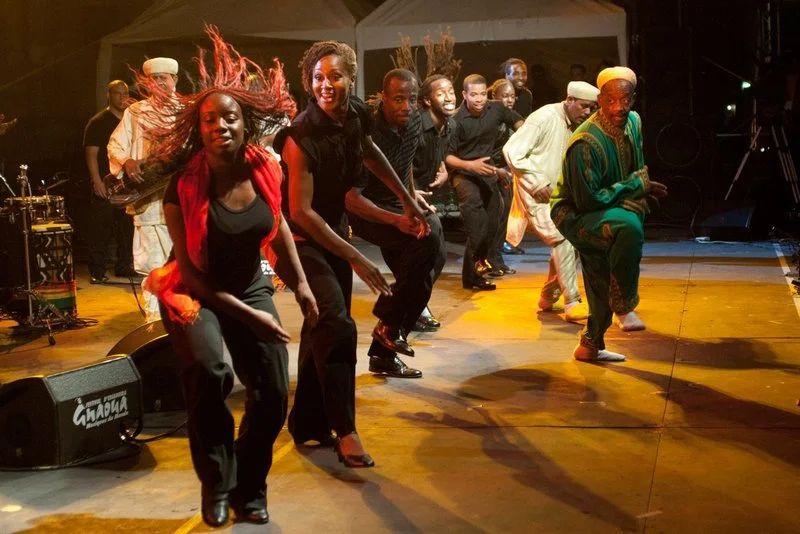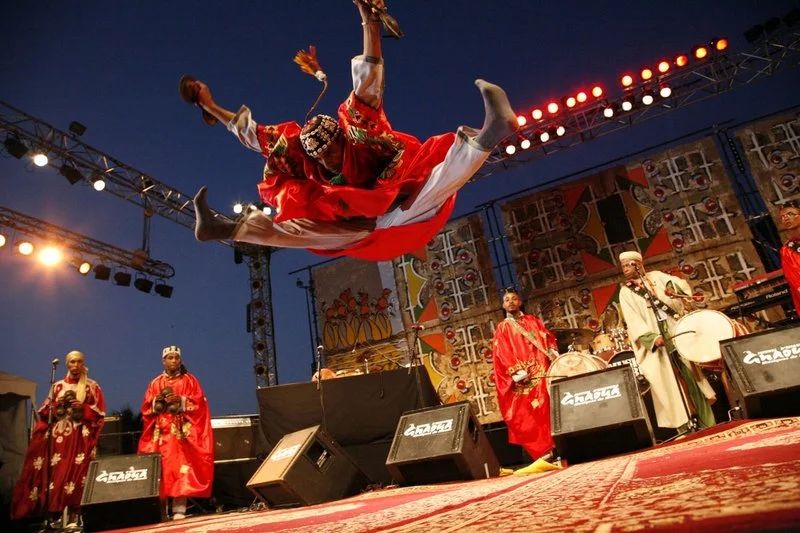Essaouira
As we reach Essaouira on a Friday evening, the liveliness from the Gnaoua World Music Festivalhas already spread across the medina (old city). Finding a space to park our car outside the ancient walled town is an epic task in and of itself, and we now enter the heavy fortifications and walk to the Riad, finding the enthusiasm of our fellow festivalgoers catching. Next to Bab Marrakech, the peaceful palm-filled patio of the elegant Heure Bleue Palais is a quiet haven from the outside commotion. We drop our luggage in our palatial suite, and hurry to reach the Place Moulay Hassan before Tony Allen’s concert.
The square is filled with cheerful music lovers. Parents carrying children on their shoulders mix with hippy groups of surfers and jazz fans. Moroccans from all over the country gather with travellers drawn to the “Wind City of Africa.” Tonight, the vent des alizés, the trade wind coming off the Atlantic, is absent, and the square warm with human enthusiasm.
As Gnaoua songs drift across the plaza, you can hear the heritage of this spiritual African-Islamic music. Like this electric rhythm, Essaouira was also subject to many influences. A Phoenician port and trading post since the 5th century BC, it was formerly named Mogador (small fortress). The fortified town, built in the 18th century on the Moroccan Atlantic Coast, is a unique combination of European military and Arabo-Muslim architectures. Since its foundation, Essaouira is a multicultural and multiconfessional centre with African, Berber, Portuguese, French, Jewish and Arab influences among others. The charming fishermen’s town has always attracted renowned artists, from the director Orson Welles to the musician Jimi Hendrix.


